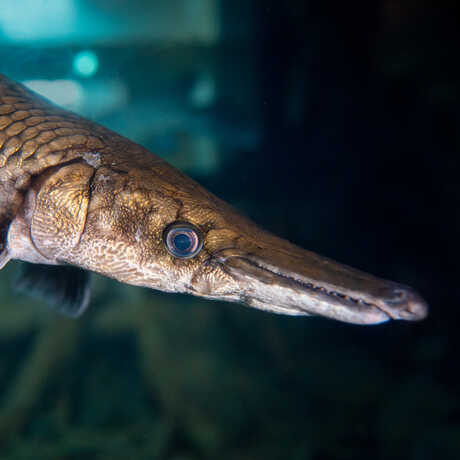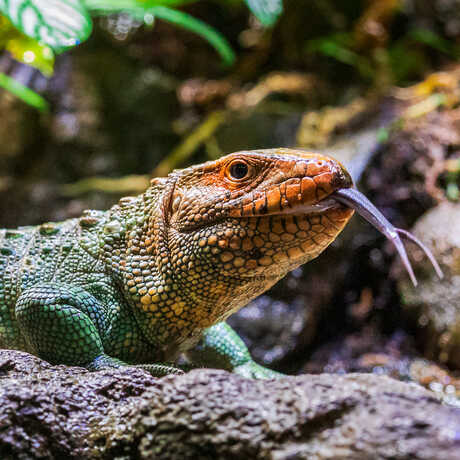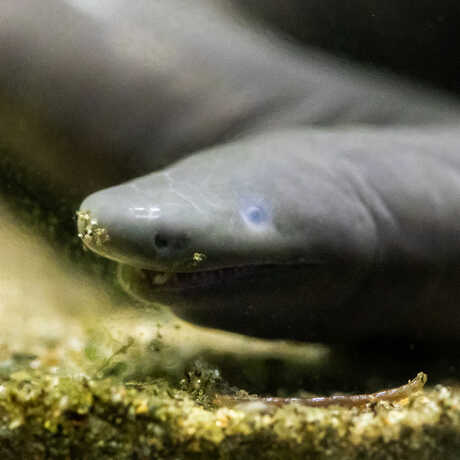Creature Closeup: Red-Crested Turaco
Don’t adjust your screen—our red-crested turacos aren’t radioactive. But these luminous birds do have a colorful claim to fame: Their vivid red and green feathers contain turacin and turacoverdin, pigments found in no other animal on Earth. If you soak a turaco feather in water, the water will eventually change color.
Since their debut in May 2024, Scarlet (female, yellow leg band) and Skittles (male, blue leg band) have brought big rainbow energy to Osher Rainforest, dazzling guests with their scarlet mohawks, striking white faces, bright yellow bills, and iridescent green and blue wings.
They also didn’t waste any time getting intimately acquainted, which was precisely the plan—the Species Survival Plan, that is!
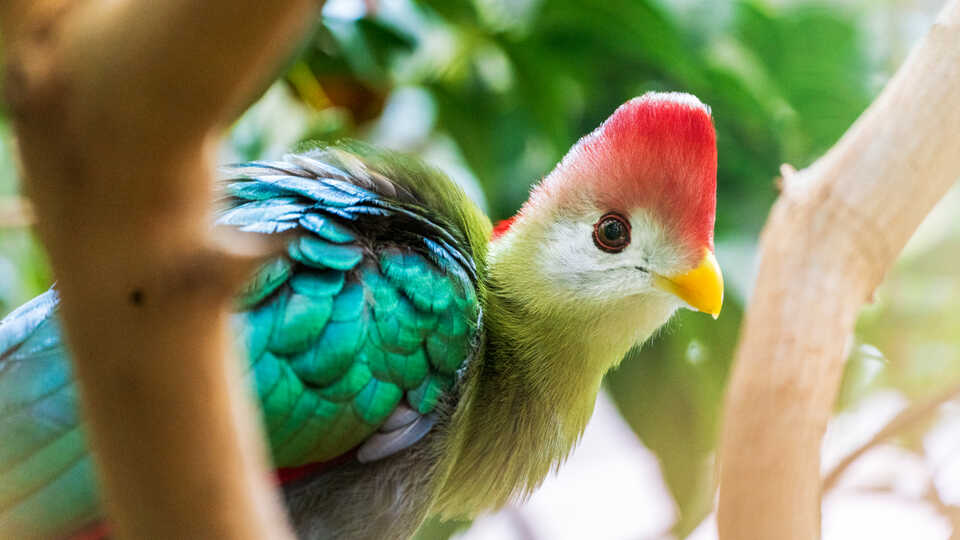
Size: Up to 20 in. and 1 lb.
Range: Western and central Angola
Habitat: Subtropical and tropical forest canopies and woodlands
IUCN conservation status: Least Concern but declining
Gayle Laird © 2024 California Academy of Sciences
The Association of Zoos and Aquariums (AZA) designs Species Survival Plans (SSP) to help boost genetic diversity of endangered or at-risk species in human care. Think of SSPs as scientifically rigorous matchmaking operations: Once Scarlet and Skittles were determined to be a good genetic fit, they were transferred to the Academy from the San Diego Zoo and Birmingham Zoo, respectively—and we waited for sparks to fly.
It didn’t take long: In early November, just a few short months after arriving in the dome, Scarlet and Skittles selected a secluded tree nook in which to build their nest of loosely woven leaves and twigs. In early December, after about three weeks of taking turns incubating their egg (and obsessive monitoring by Academy biologists), a healthy chick hatched.
The as-yet-unnamed chick fledged from its nest after about four weeks, and is now a thriving, independent adult.
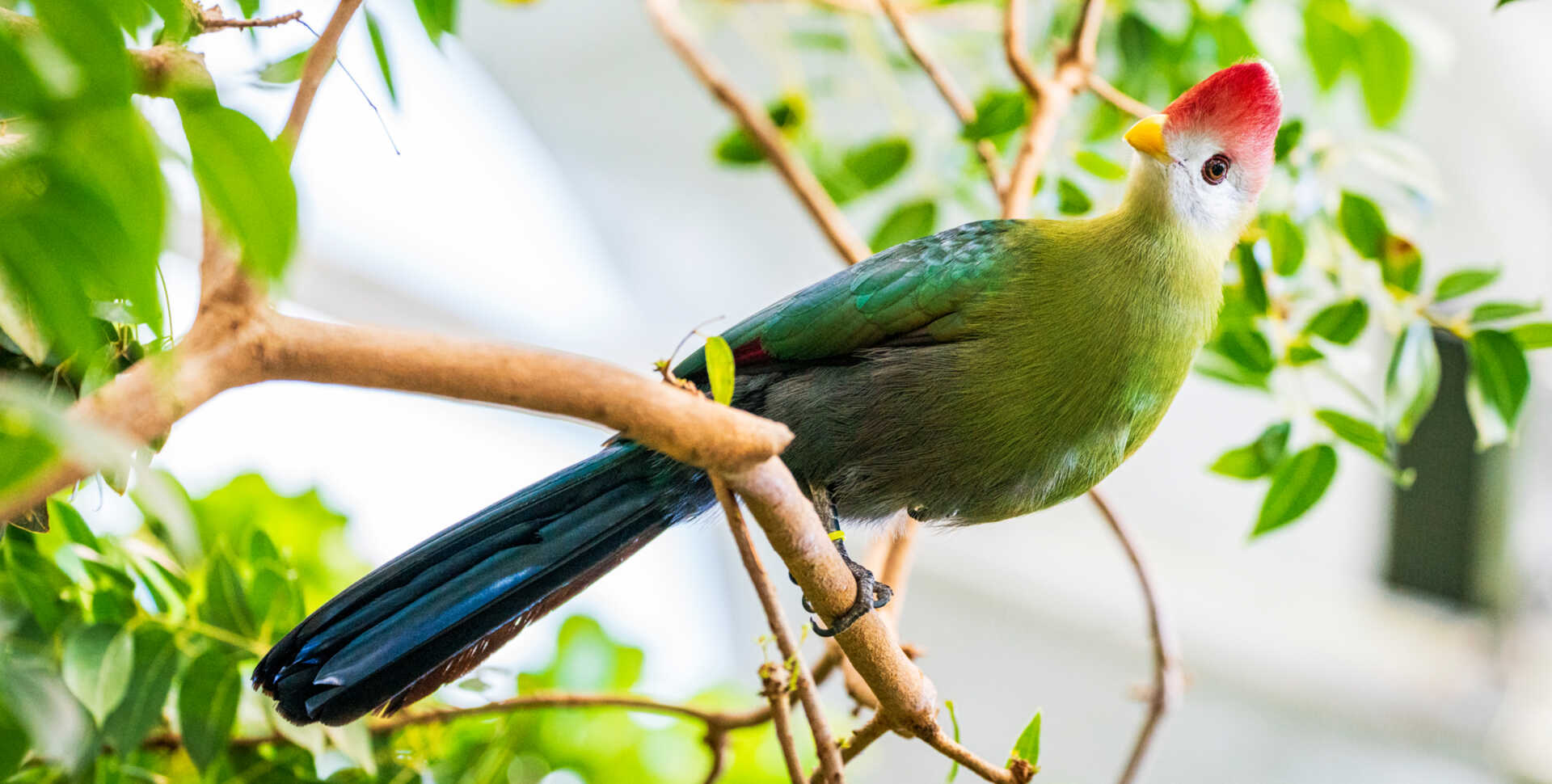
- The red-crested turaco is the national bird of Angola—and the first African bird species to live (and reproduce!) in Osher Rainforest.
- Its scientific name, Tauraco erythrolophus, means “banana-eater,” but our turacos’ favorite foods are blueberries and grapes.
- Like our other rainforest birds, red-crested turacos don’t feed on butterflies, a critical factor in determining their viability for the exhibit.
- The call of the red-crested turaco isn’t quite as beautiful as its appearance—have a listen over at eBird.
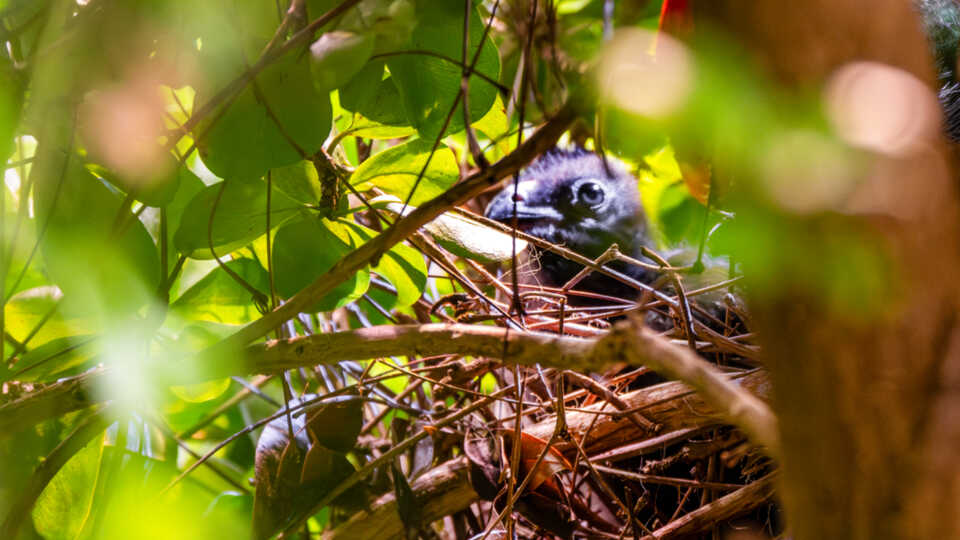
Our days-old red-crested turaco chick waits for its parents to return to the nest with a meal, which will be regurgitated into its mouth.
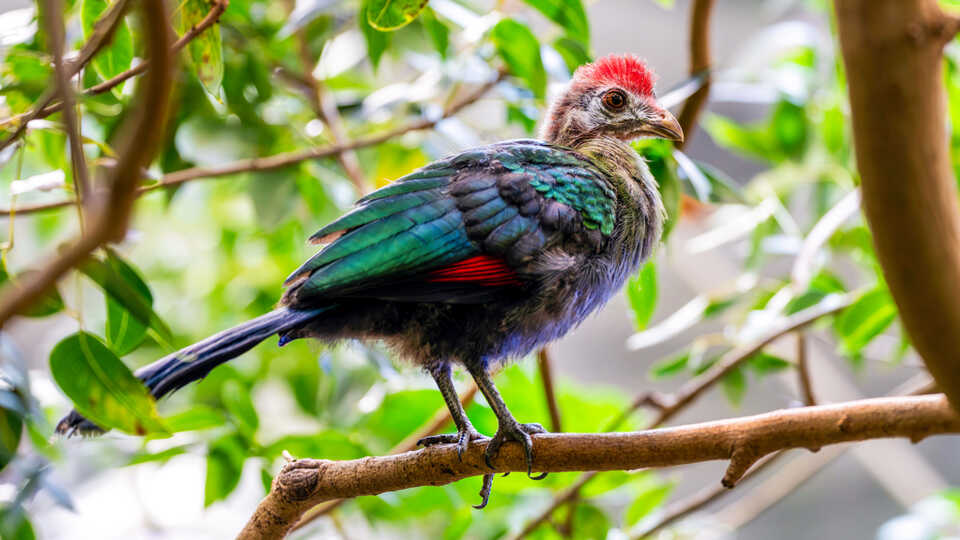
After an initial awkward phase, the chick started to develop its signature coloration (and mohawk) after about a month.
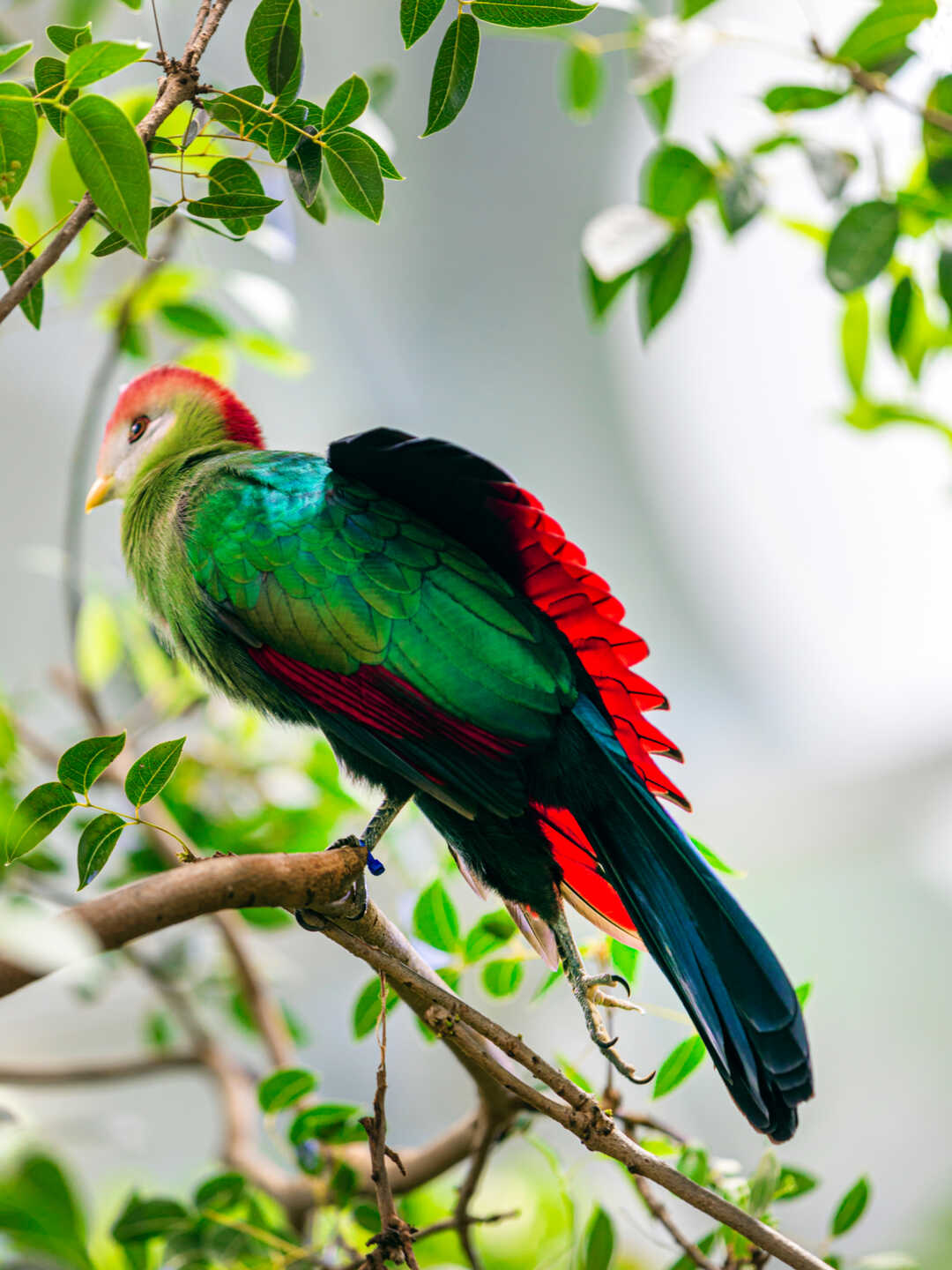
Big stretch! One of our adult turacos shows off bright red wing feathers usually only visible in flight.
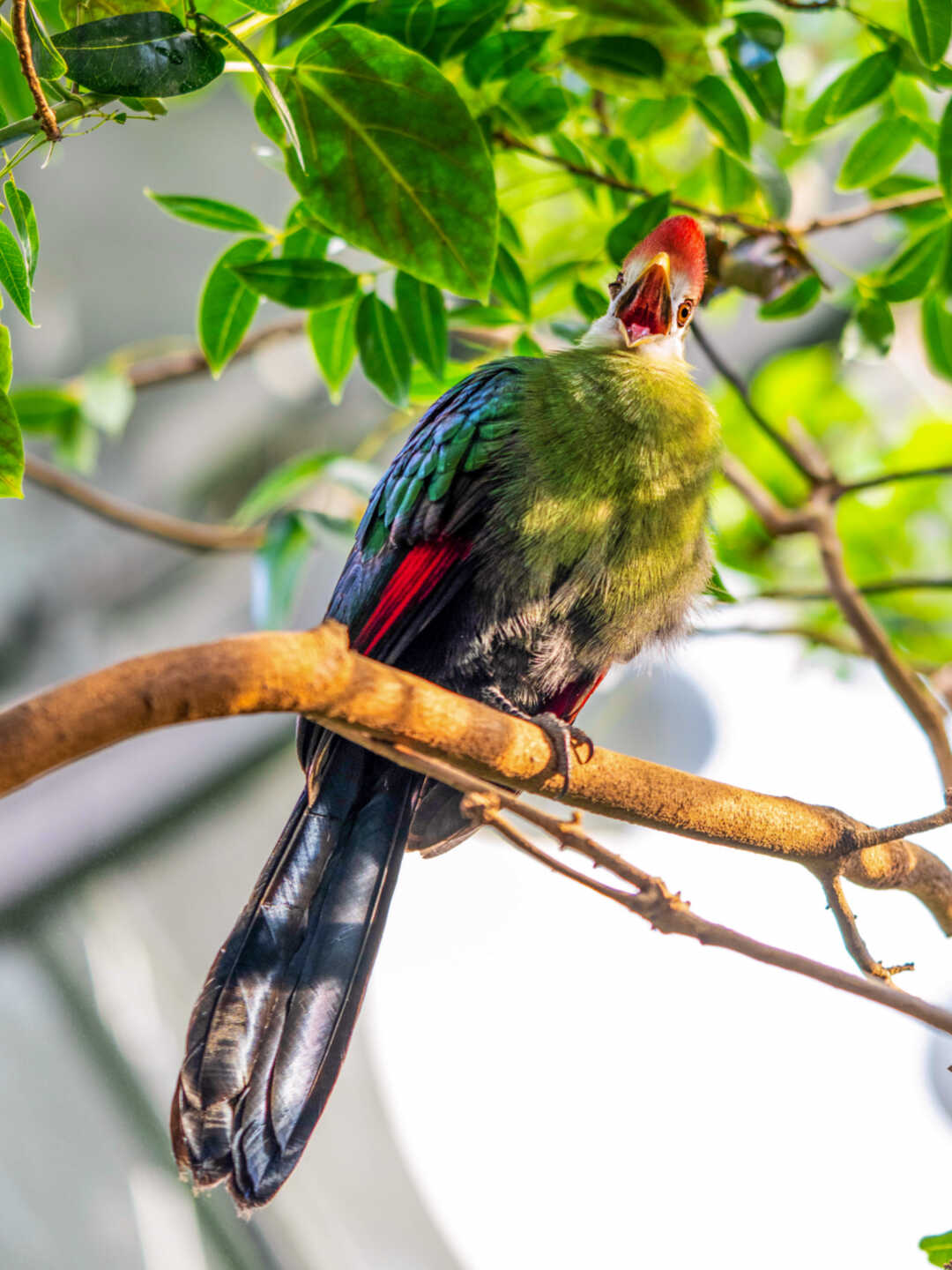
If you hang out on the top level of Osher Rainforest next to the elevators, you’re likely to enjoy an up-close visit with Scarlet or Skittles!
Above photos: Nicole Ravicchio © 2024 California Academy of Sciences
